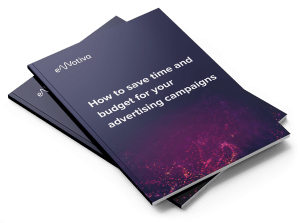How To Spend Budget On The Right Marketing Campaigns
How do you make sure you are spending budget on the right campaigns? It comes down to how well you understand your audience, prepare your marketing campaign, and can pivot to capture and maintain the attention of your audience. Technology also plays a role in helping to accelerate and direct your decisions to the right path.
Key points:
- Several campaign types exist and selecting the right type depends on several factors
- Companies typically allocate 5 to 25 percent of total revenue or revenue targets for marketing campaigns
- Three solutions help to avoid common marketing campaign budget pitfalls
What makes a marketing campaign effective
Defining what makes a marketing campaign effective starts by understanding its purpose or the goals you are trying to reach and the best type of marketing campaign to get you there.
Marketing campaign goals can vary from driving brand awareness to a new audience, launching a new product, or promoting a new add-on feature to existing customers. With the campaign’s purpose defined, you can then determine the type of campaign needed to achieve your goals.
Types of marketing campaigns
Marketing teams run several different campaigns, including:
- Product launch or update campaign to promote a new product or feature
- Acquisition campaign to generate new leads and deals
- Customer expansion campaigns to upsell existing customers with upgrades or add-on services
- One-off/seasonal campaigns to take advantage of a short-term trend
- Real-time campaigns to leverage an immediate happening

Woorise also lists different channels that can be used for campaigns, including:
- Social Media Campaign
- Paid Advertising Campaign
- Content Marketing Campaign
- Email Marketing Campaign
- User-Generated Content Campaign
- Brand Awareness Campaign
- Affiliate Marketing Campaign
What characteristics make for an effective ad?
In a previous blog post, we covered six questions to ask when creating campaign content, including:
- Does the ad content capture your intended audience’s attention?
- Does the ad content provide value?
- Does it have enough emotion to empathize with your intended audience?
Good ads also consist of five elements (Chron):
- They have visual impact
- They have great copy that resonates
- They are perfect placement
- The timing is right
- They have a clear call-to-action
Marketing metrics for effective marketing campaigns
Several metrics can help ensure your marketing campaign effectively achieves your goals. These metrics can include pageviews, click-through rates, form submissions, or any of these 50 metrics helping to determine if your content is good enough for your campaigns.
Some marketers approach metrics in three ways:
- Pre-campaign metrics: including ad testing to be sure the content is relevant to the audience
- During campaign metrics: including page views, form submissions, or contact requests
- Post-campaign metrics: including pipeline influence, revenue from closed-won deals, and customer acquisition costs
The three metric checkpoints above help to determine whether the campaign is meeting its goals or needs pivoting and if the campaign type effectively works to meet the goals.
>> You might like: [White Paper] How to Save Time and Budget for Your Advertising Campaign
What is a good budget for a marketing campaign?
A good budget for a marketing campaign can vary depending on the industry, maturity of the market, age of the company, and the marketing/sales structure. Marketing campaign budgets typically range from “…5 to 25 percent of a company’s revenue or revenue targets”, as reported by BrightEdge.
BrightEdge further suggests that a company’s growth stage narrows down how much to allocate to marketing budgets: “…companies seeking to maintain their market positions budget 2-10% of revenue goals towards marketing; companies with growth targets of more than 50% (fast-growth stage) marketing budget 15-30% of projected revenue.”
Marketing campaign budgets by industry
Gartner recently released a report breaking down marketing budget allocations by industry, as compared to the previous year:
Financial services, media, and tech product industries represent the biggest spenders, with consumer products spending the least. Regardless of the amount allocated to the marketing budget, investing in the right campaigns, media types, and channels wisely remains equally critical.
When looking at media types specifically, digital ads are forecasted (Dentsu) “…to reach US $408.4 billion in 2022 accounting for a 55.5% share of global ad spend. This is predicted to increase to 59.4% by 2024.” By industry, Beverages, Retail and Cosmetics & Personal Care will lead the pack as the largest ad spenders.
How to avoid common marketing campaign budget pitfalls
Start by surveying your customers and prospects. Two levels of surveying help to identify underlying trends that could help enhance your marketing campaign:
- Macro: Ask questions about their feelings on the market, their current situation/pain points, and so on. This data helps provide guidance on themes to focus on with your content.
- Micro: Analyze a specific campaign, conduct ad testing to gather emotional reactions to viewing an ad, and so on. This data provides insights into how to pivot your campaign to more effective content.
Set yourself up to collect and analyze high quality data. Ever heard of “analysis paralysis”, when you have too much data to confidently make a decision? You can set yourself up to collect the right data you need for your marketing campaigns by leveraging technology such as artificial intelligence (AI) or Emotion AI. Thanks to advanced computer vision algorithms, marketers can use Emotion AI to collect valuable data such as emotional markers that measure attention levels and positive or negative reactions to content.
Use emotion to support your KPIs. Emotional marketing involves invoking a certain emotion in your marketing campaigns. Studies show that campaigns that use emotional content get about twice as many results (31% vs. 16%) as those with only rational content. Several core emotions such as joy or surprise can also be easily measured using Emotion AI and tracked in a dashboard. Some tools provide advanced features such as predictive analysis, which scores the effectiveness of content based on the emotional reactions invoked from the first 5 seconds of viewing it. Freeda Media used predictive analysis recently.
Save time and money
Learn more about how you can save time and money on your advertising campaigns. Our white paper provides several resources to help you get started.
DOWNLOAD YOUR FREE WHITE PAPER





































